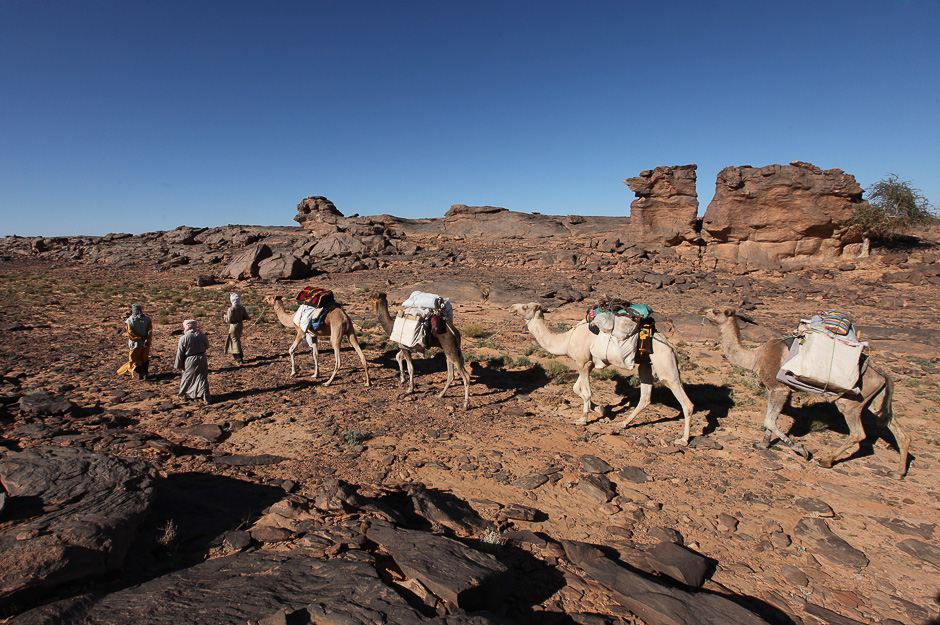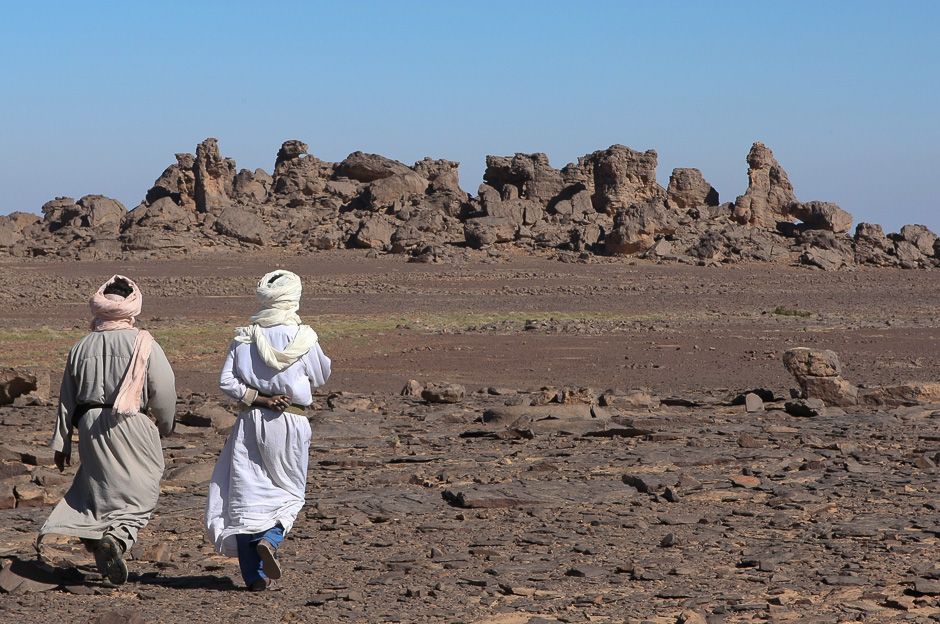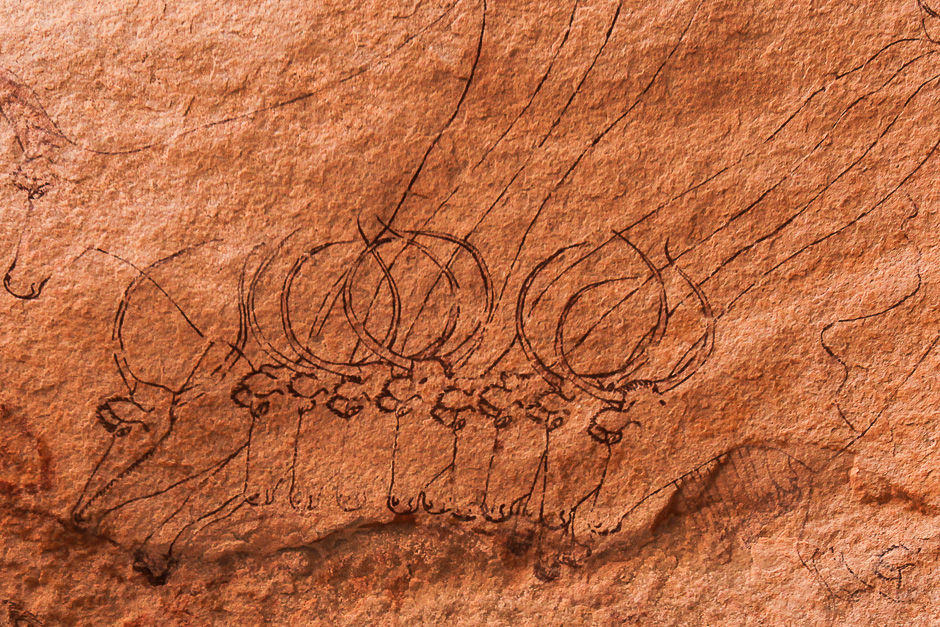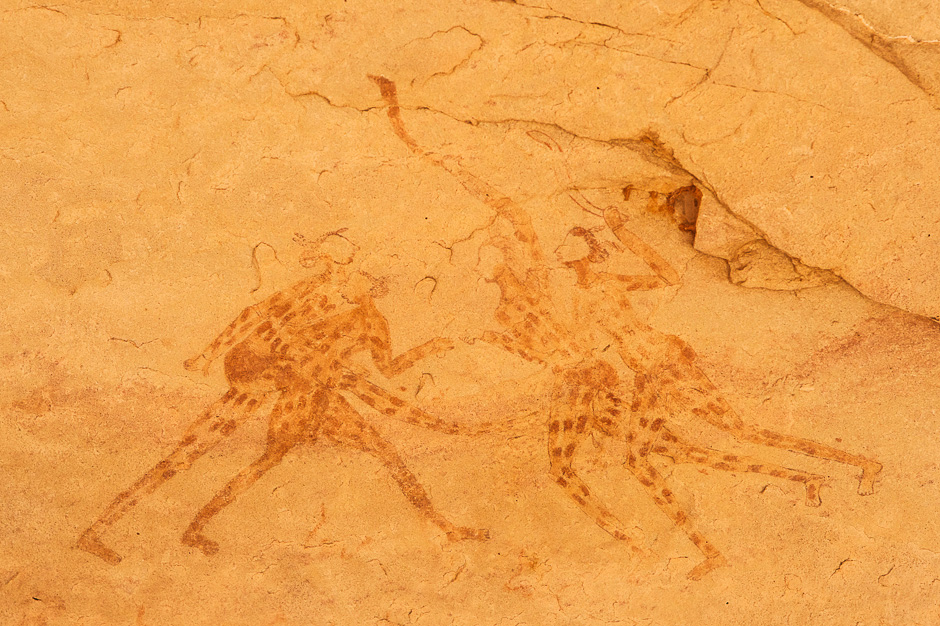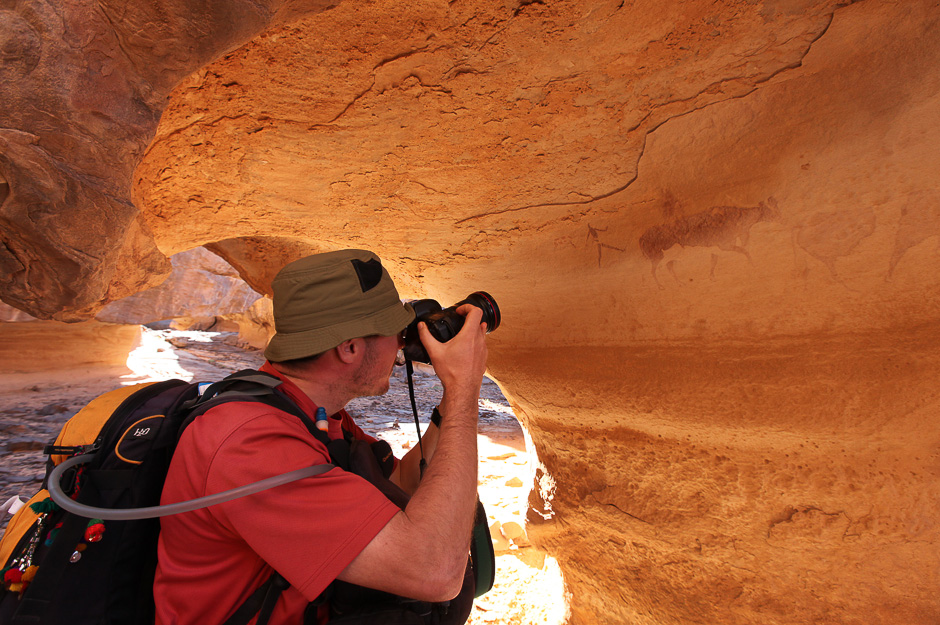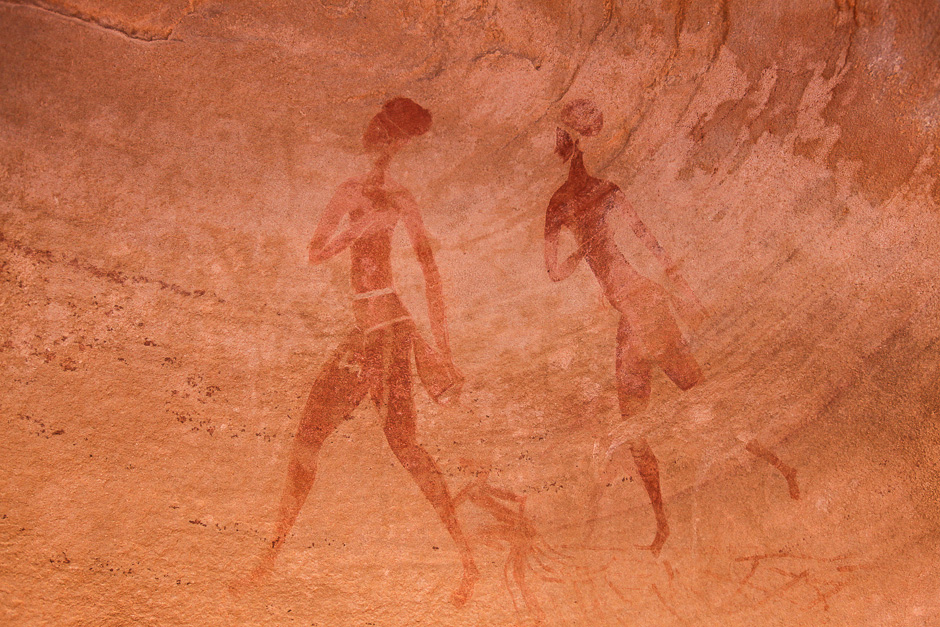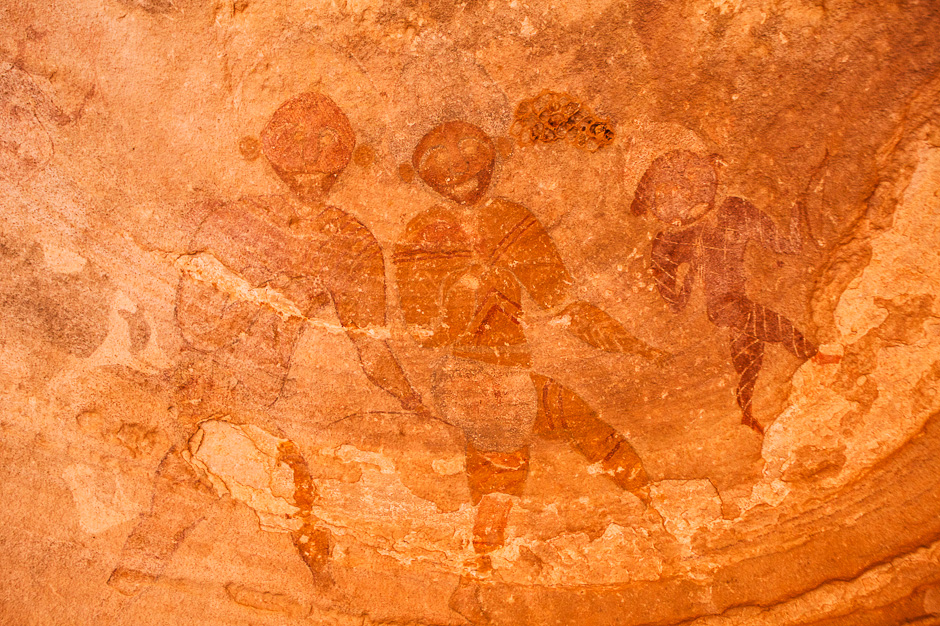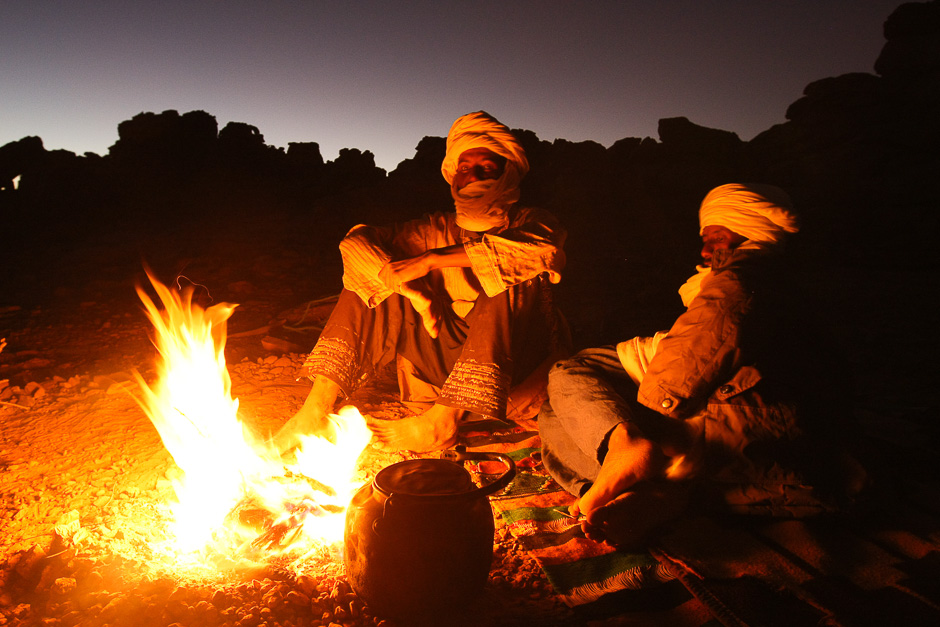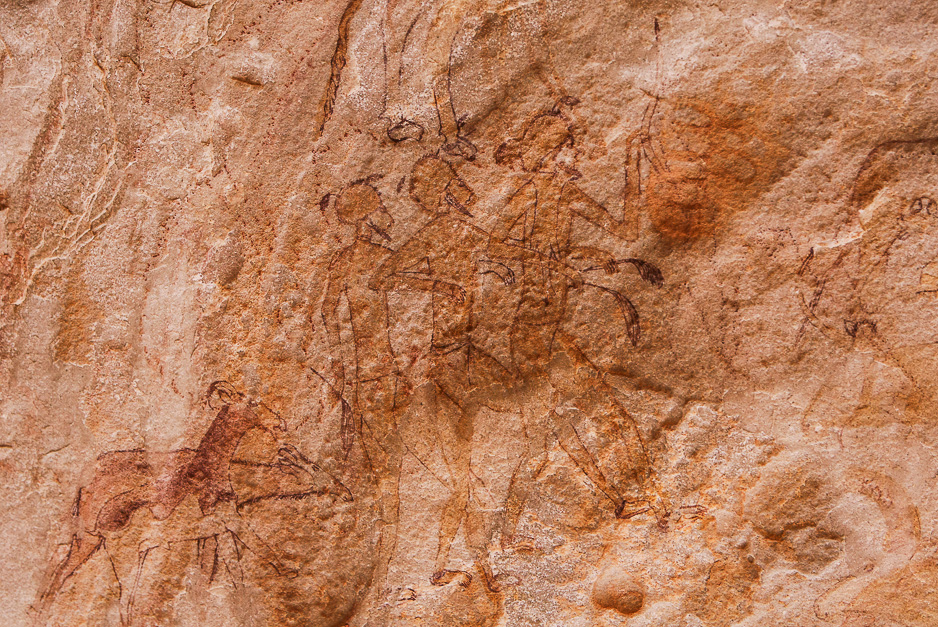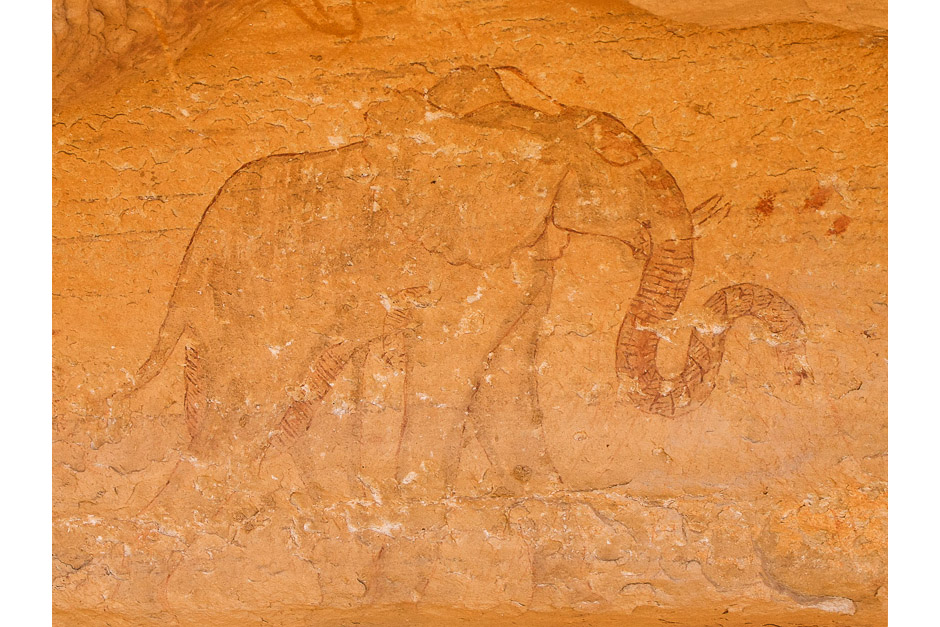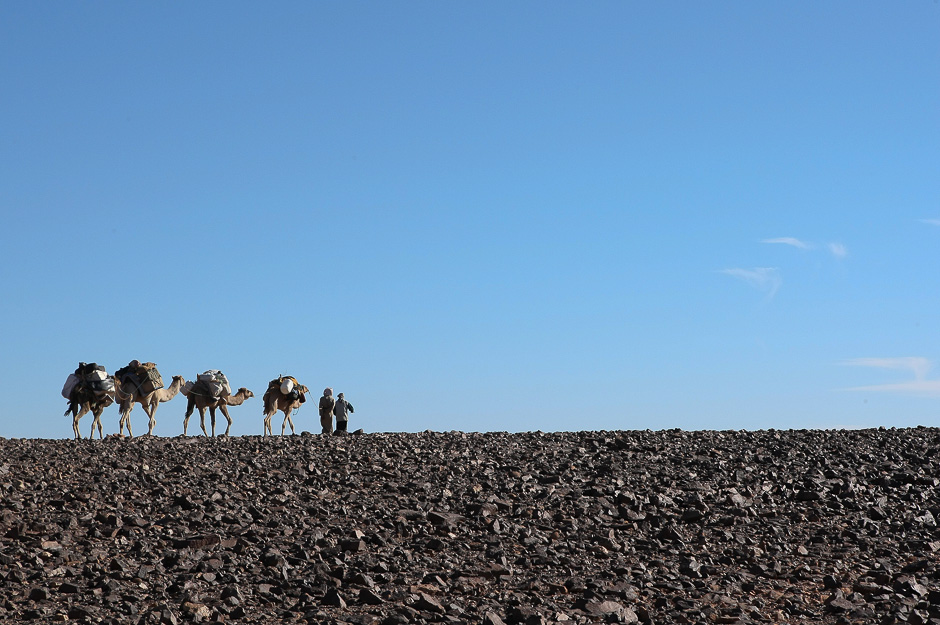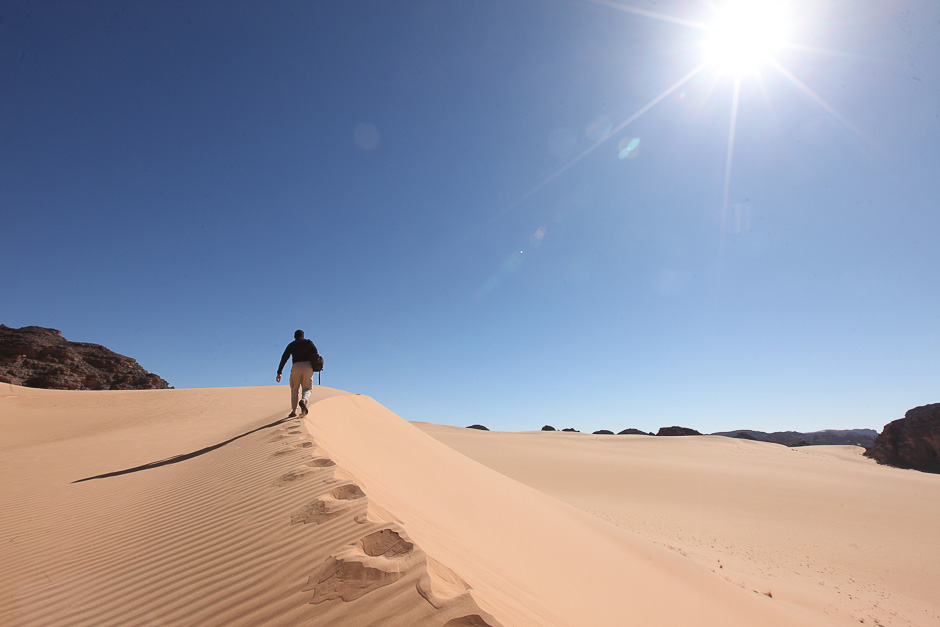At about 200km in the direction of Illizi, there is a branch point to Iherir Oasis. This is the starting point for the walking trip with camels. The bottoms of large sandstones are carved by water and wind where numerous rock paintings are found.
ジャネットからイリジの方向に200キロほど国道を走ると、イヘリールオアシスへの分岐点に出る。ここはすでに台地の上で、比較的起伏の少ないところを、駱駝とともに歩く。大きな砂岩の回廊では水や風による浸食で基底部が大きく抉られており、こうしたところに岩面画(自然の岩に描かれた彩画や刻画)がある。
Here, no paintings of “Round head” who were hunting people but many painting of the period of cows. There were two types of people: first around 5,500 BC, black pastoral people keeping cow arrived in the plateau, then around 3,500 BC, white pastoral people keeping cow, sheep and goat.
What is special in this area is the existence of numerous paintings of white pastoral people. The paintings of Iheren and Tahilahi are fascinating. Scenes of the life of the pastoral people are depicted in detail with very fine lines. Their exact dating is unknown but presumably dated from 3,000BC to 1,500BC. It is amazing that such fine arts were realized by prehistoric nomadic people who were not under any dynastic power.
この地域では「円頭時代」と呼ばれる狩猟民の絵はなく、紀元前5,500年ごろ渡来したと考えられる黒人系の遊牧民と、紀元前3,500年ごろ渡来したと考えられる白人系の遊牧民の描き残した「牛の時代」の岩面画が多くみられる。
他の地域では少ない白人系民族の描いた絵が多いのがこの地域の特徴だ。特にイヘーレンとタヒラヒの壁画は素晴らしく、繊細な描画で遊牧民の生活が描かれている。はっきりした年代は特定されていないが、紀元前1,500-3,000ごろのものと推定されている。エジプトの古代王朝と同じ時代だが、エジプトとは遠く離れた土地で、権力とはゆかりもなさそうな遊牧民がこれだけの絵を描いたことに驚く。

